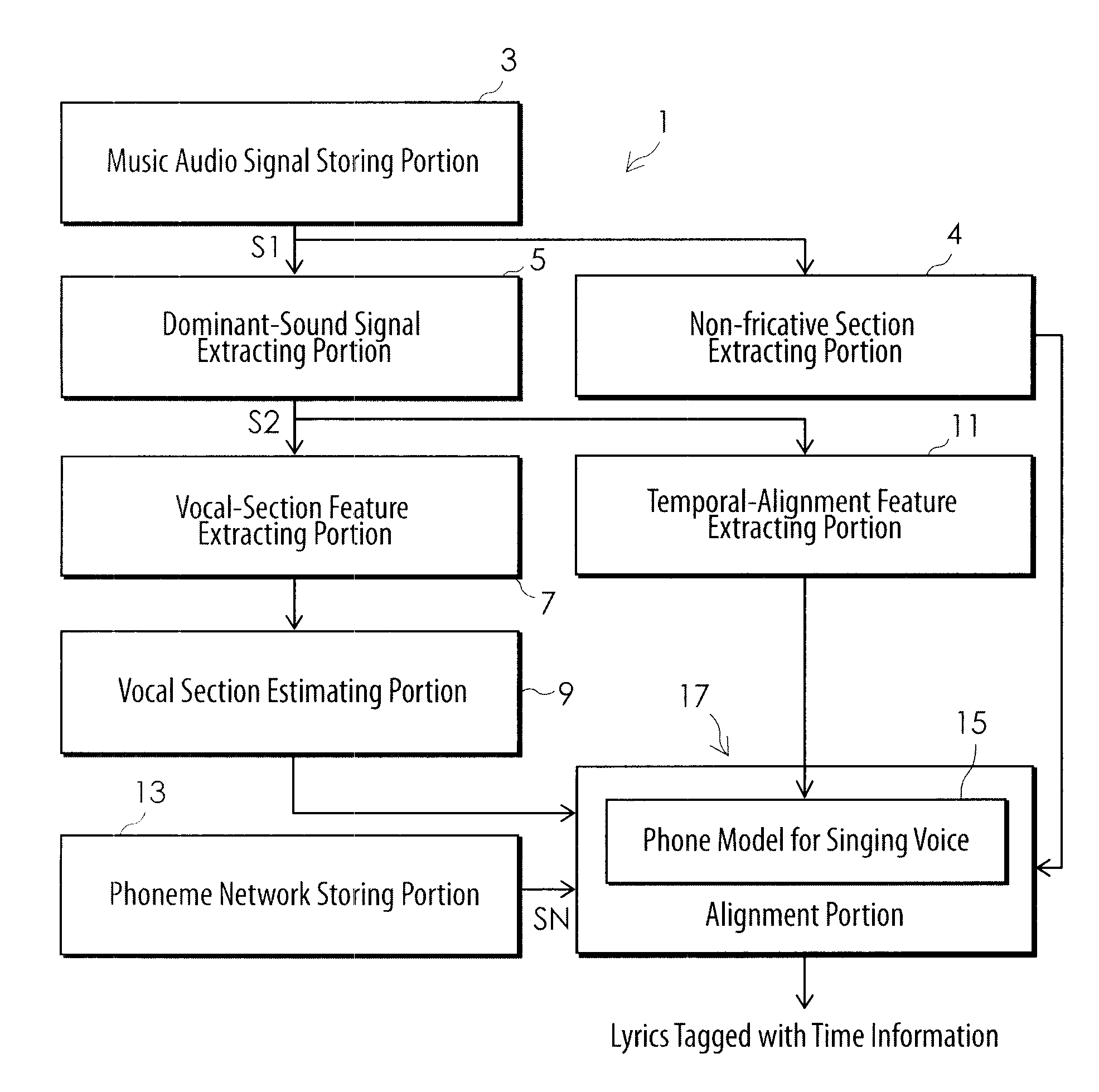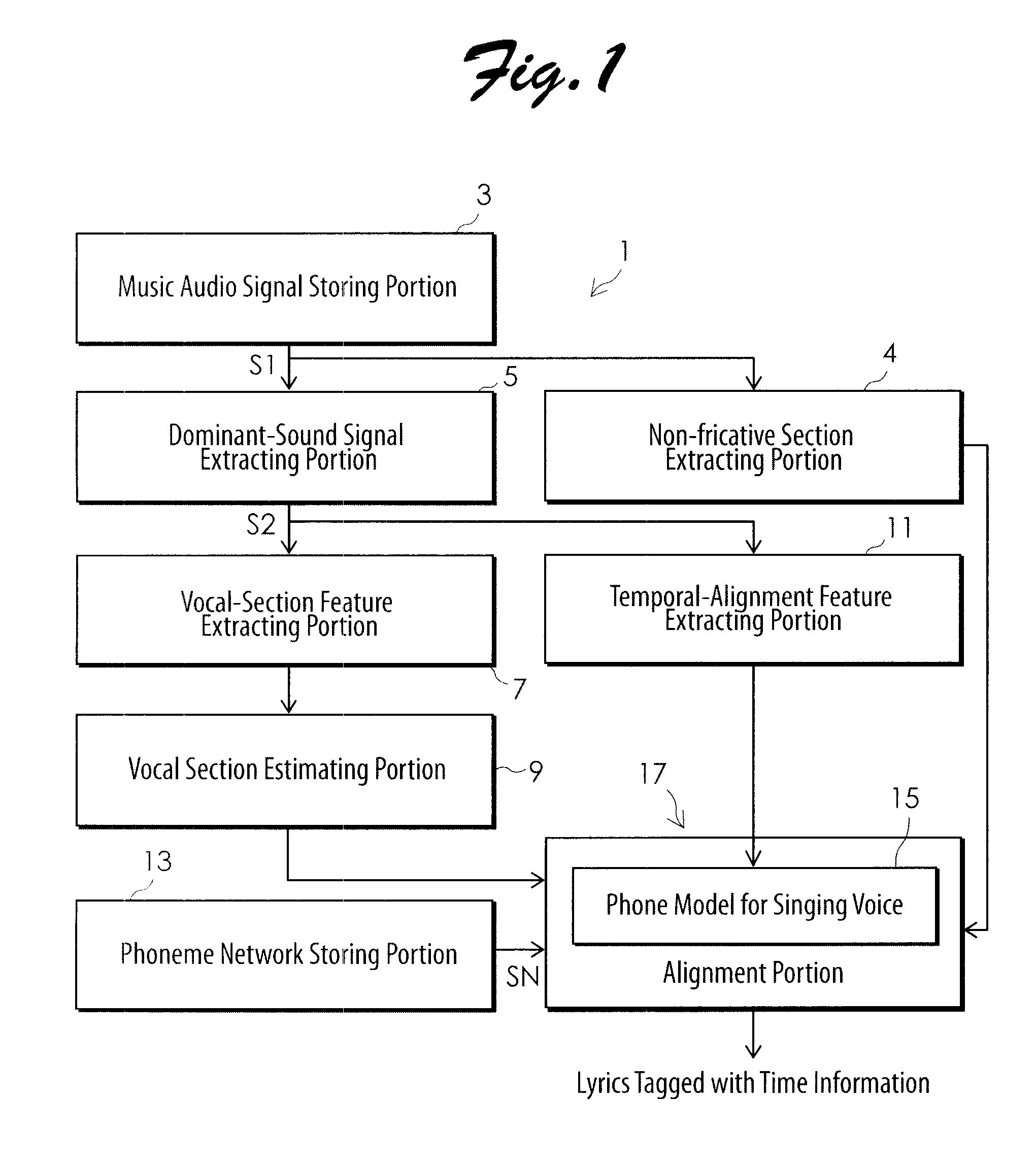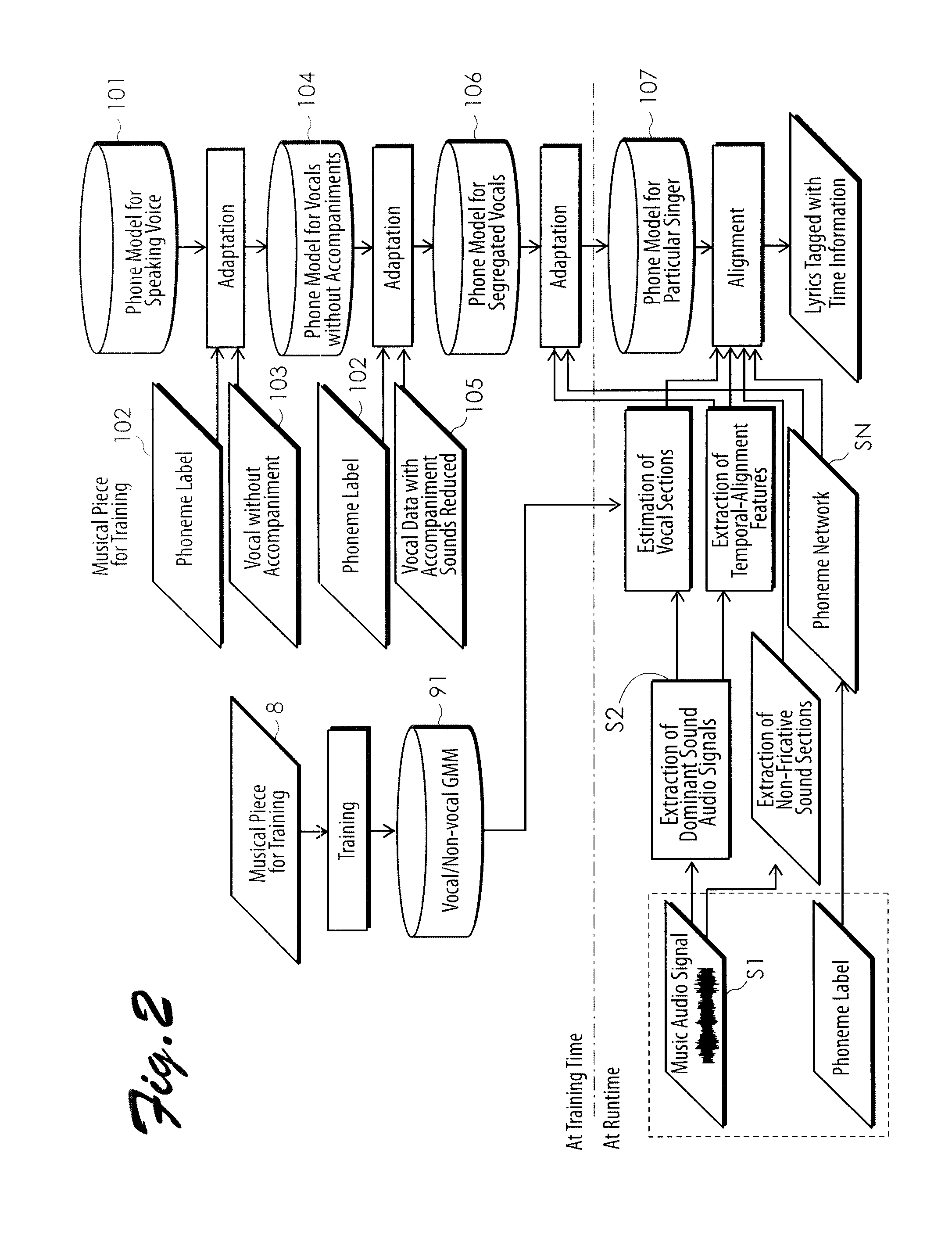System and method for automatic temporal adjustment between music audio signal and lyrics
a technology music audio signal, applied in the field of automatic temporal adjustment can solve the problem of not disclosing a temporal alignment technique between music audio signal and lyrics, and achieve the effect of suppressing the effects of non-vocal sections, improving the accuracy of alignment of unvoiced consonants, and difficult to distinguish consonants
- Summary
- Abstract
- Description
- Claims
- Application Information
AI Technical Summary
Benefits of technology
Problems solved by technology
Method used
Image
Examples
Embodiment Construction
[0054]Now, an embodiment of the system for automatic temporal alignment between music audio signal and lyrics and a method therefor according to the present invention will be described in detail with reference to the accompanying drawings. FIG. 1 is a block diagram illustrating a configuration of function implementing portions when a system for automatic temporal alignment between music audio signal and lyrics according to the present invention is embodied in a computer. FIG. 2 is a flowchart showing the steps of implementing the system of FIG. 1 by running a computer program in the computer. The system 1 comprises a music audio signal storing portion 3, a non-fricative section extracting portion 4, a dominant-sound signal extracting portion 5, a vocal-section feature extracting portion 7, a vocal section estimating portion 9, a temporal-alignment feature extracting portion 11, a phoneme network storing portion 13, and an alignment portion 17 including a phone model 15 for singing v...
PUM
 Login to View More
Login to View More Abstract
Description
Claims
Application Information
 Login to View More
Login to View More - R&D
- Intellectual Property
- Life Sciences
- Materials
- Tech Scout
- Unparalleled Data Quality
- Higher Quality Content
- 60% Fewer Hallucinations
Browse by: Latest US Patents, China's latest patents, Technical Efficacy Thesaurus, Application Domain, Technology Topic, Popular Technical Reports.
© 2025 PatSnap. All rights reserved.Legal|Privacy policy|Modern Slavery Act Transparency Statement|Sitemap|About US| Contact US: help@patsnap.com



